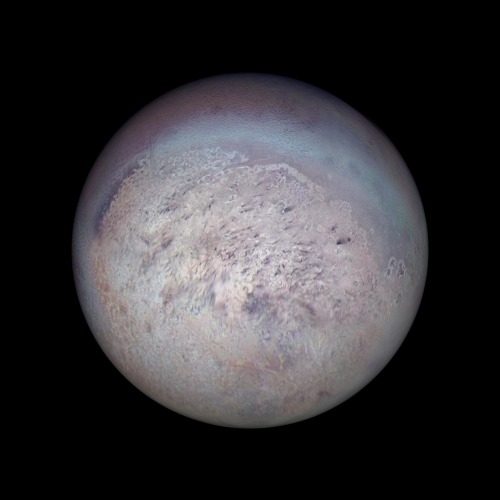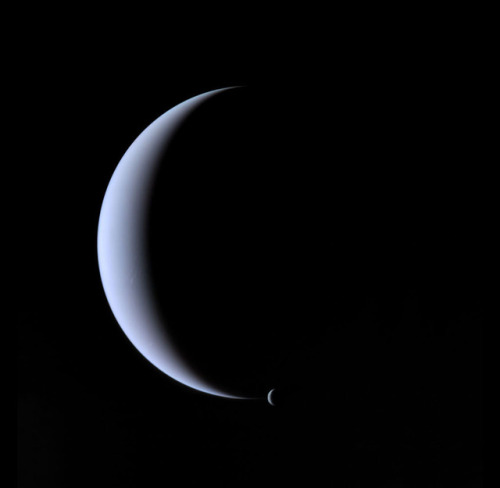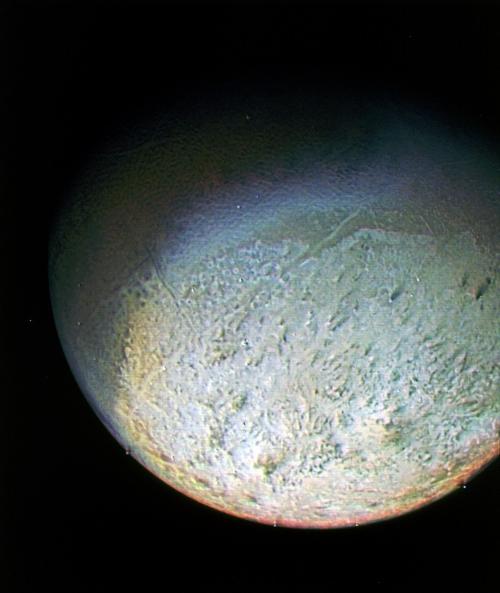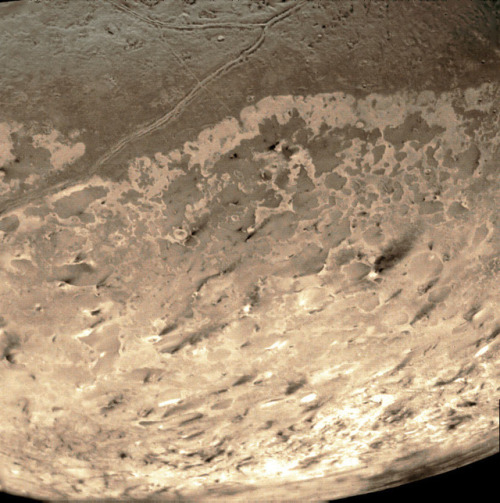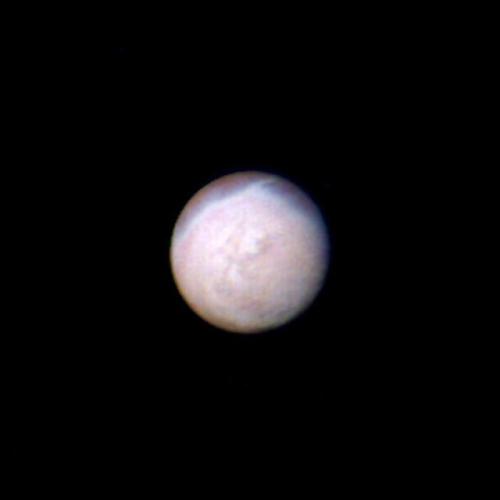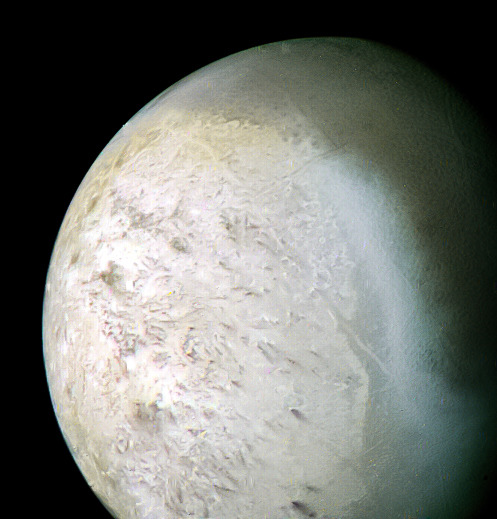Triton It is the only large moon in the Solar System with a retrograde orbit, an orbit in the direct
Triton It is the only large moon in the Solar System with a retrograde orbit, an orbit in the direction opposite to its planet’s rotation. At 2,710 kilometres in diameter, it is the seventh-largest moon in the Solar System. Because of its retrograde orbit and composition similar to Pluto’s, Triton is thought to have been a dwarf planet captured from the Kuiper belt. Triton has a surface of mostly frozen nitrogen, a mostly water-ice crust, an icy mantle and a substantial core of rock and metal. The core makes up two-thirds of its total mass.All detailed knowledge of the surface of Triton was acquired from a distance of 40,000 km by the Voyager 2 spacecraft during a single encounter in 1989. The 40% of Triton’s surface imaged by Voyager 2 revealed blocky outcrops, ridges, troughs, furrows, hollows, plateaus, icy plains and few craters.Triton is geologically active; its surface is young and has relatively few impact craters. Although Triton’s crust is made of various ices, its subsurface processes are similar to those that produce volcanoes and rift valleys on Earth, but with water and ammonia as opposed to liquid rock.Triton’s entire surface is cut by complex valleys and ridges, probably the result of tectonics and icy volcanism. The vast majority of surface features on Triton are endogenic—the result of internal geological processes rather than external processes such as impacts. Most are volcanic and extrusive in nature, rather than tectonicThe Voyager 2 probe observed in 1989 a handful of geyser-like eruptions of nitrogen gas and entrained dust from beneath the surface of Triton in plumes up to 8 km high.Triton is thus, along with Earth, Io, and Enceladus, one of the few bodies in the Solar System on which active eruptions of some sort have been observed. (source) images: NASA/JPL-Caltech/ISS &Kevin M. Gill -- source link
Tumblr Blog : wonders-of-the-cosmos.tumblr.com
#neptune#netuno#triton#tritão#lua#luna#satellite#voyager#solarsystem#sistemasolar#criovulcanismo#cryovolcanism#nitrogen
